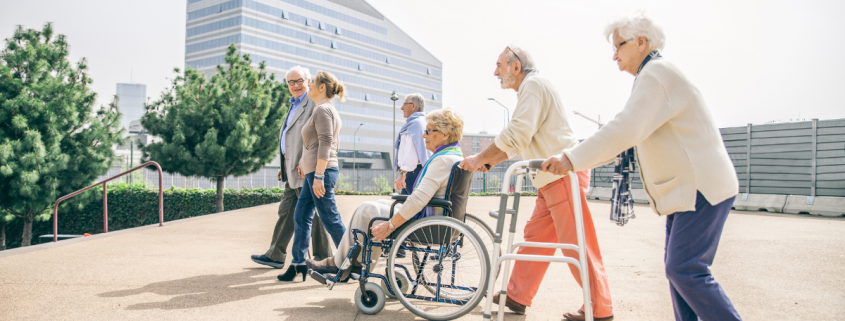What Causes Mobility Issues In the Elderly and Can They Regain Their Mobility?
Seniors, due to chronic illnesses and the limitations of their age, start to have more and more problems with independent movement and balance over a certain period. Seniors not only require more care but also need support in improving their mobility. It is a normal, but not unpreventable, course of events.
What causes mobility issues in the elderly? What are the treatments for loss of balance in the elderly? And how to get the elderly walking again? Today we are going to try to dispel your doubts in this respect.
What causes mobility issues in the elderly?
Mobility problems can consist of instability when walking, and difficulties in climbing in and out of a wheelchair or stairs, and can also be caused by the repercussions of falls and injuries. There are also factors contributing to mobility problems that are constant for all older people. Factors such as:
- muscle weakness
- joint problems,
- pain,
- neurological diseases and difficulties.
Sometimes several benign problems occur at the same time and combine to severely affect mobility, so it is essential to watch out for early signs of the factors that cause mobility issues in the elderly.
The first signs that a senior has mobility problems
Below you should find the most important symptoms that should tell you that you or your senior loved one may have problem mobility issues. Seniors should look out for the following symptoms:
- Problems climbing stairs or stepping on objects
- Difficulty keeping the house clean or maintaining personal hygiene
- Difficulty rising from a sitting position
- Recurrent dizziness or feeling unsteady when walking
Balance problems in the elderly – UK
Balance disorders in the elderly, including those associated with dizziness and difficulty in maintaining body balance, are often underestimated. However, lack of treatment for loss of balance in elderly people can result in dangerous falls and complications.
The most common causes of balance disorders in the elderly include:
- lowered blood pressure
- dehydration
- visual impairment
- neuropathies
- vaginitis
- dementia
- diseases of the musculoskeletal system (osteoporosis, arthritis)
- history of stroke
- liver diseases (especially those accompanied by hepatic encephalopathy)
- vestibulospinal neuroma
- neurological diseases, for example, multiple sclerosis.
Elderly walking problems remedies
Below you can learn about the most important aspects of preventing and managing mobility and balance difficulties in older people.
Physical activity
As we get older, our body undergoes drastic changes in every system. Diseases and illnesses begin to increasingly restrict mobility and active living. There is no denying that a lack of movement, or physical activity even in the form of walking, can result in a decrease in fitness, reduced muscle strength and joint problems. A WHO study found that regular physical activity for seniors increases their balance and prevents falls.
Therefore, a basic treatment for loss of balance in the elderly is to encourage increased physical activity depending on the senior’s health status. The best types of sports to help prevent mobility problems are swimming, yoga, Thai Chi, Nordic Walking and walking, as well as physiotherapy under the supervision of a specialist.
Walking aids
But what about when a senior citizen is ill, their body is weakened and there is no way to undertake any physical activity? Professional medical equipment, whose main task is precise to improve the mobility of older people, comes to the rescue.
The most popular walking aids are crutches and canes. These medical products are extremely important in maintaining balance and supporting the mobility of older people. They provide a third and, with two crutches, even a fourth point of support. This increases the patient’s sense of balance and relieves pressure on the lower limb.
Walking frames are available in different variants. Some static walkers ideally take care of the patient’s balance, but require the user to use more arm strength. This has its advantages, however, as it activates the muscles of the upper body. Walkers, on the other hand, adapt to the patient’s movements and there is no need to lift them, so they work well for people with limited upper limb mobility.
Mobility issues in the elderly – conclusion
It is a good idea to take care of one’s mobility in advance with regular physical activity and a good diet. Then you may not have to face them in old age.















